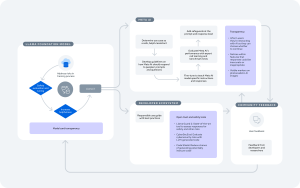MUNICH – In a groundbreaking fusion of language models and robotics, Prof. Angela Schoellig from the Technical University of Munich (TUM) has utilized ChatGPT to orchestrate choreographies for swarms of drones synchronized to music. The integration, termed “SwarmGPT,” not only marks a milestone in robotics but also underscores the potential for large language models (LLMs) like ChatGPT in practical applications beyond text generation, according to a press release published on EuropaWire.
The innovative process begins with doctoral student Martin Schuck inputting music tracks and prompts into ChatGPT, which then suggests choreographies for the drone swarm. This interactive web interface streamlines the creative process, enabling rapid choreography development. Once vetted for feasibility, the drones, equipped with safety filters, take flight, executing intricate maneuvers with pinpoint precision.
Prof. Schoellig’s research team has transformed the choreography creation process, previously laborious and time-intensive, into a streamlined operation. With ChatGPT’s assistance, the development of safe choreographies for multiple drones now takes a mere five minutes, a stark contrast to the years it once required. This acceleration in workflow signifies a significant advancement in robotics research and underscores ChatGPT’s versatility beyond its original text generation capabilities.
The success of SwarmGPT heralds a new era in robotics, where non-experts can interface seamlessly with complex systems using intuitive tools. Looking ahead, Prof. Schoellig envisions expanding this approach to other robotic applications, potentially revolutionizing industries reliant on automation. With continued refinement, ChatGPT-driven interfaces may soon empower users to reprogram robots effortlessly, unlocking new possibilities in automation and robotics.



















